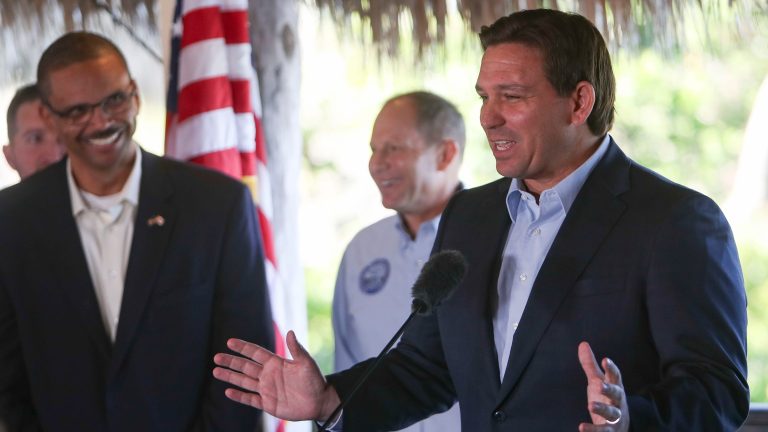
Four years ago, then-brand new Florida Governor Ron DeSantis’ first executive order delivered historic funding to the environment: $2.5 billion for Everglades and water protection, the most in the state’s history.
He coupled that move with sweeping mandates for agency change.
Now, DeSantis is ready to top that.
In his first 2023 SWFL appearance, four years to the day after that order, he announced a new one, with $3.5 billion this time.
“Achieving Even More Now for Floridspan’s Environment” takes broad aim at the state’s environment woes with continued focus on the River of Grass, Indian River Lagoon restoration, coastal resiliency, coral reef protection, and land conservation.
It’s a stiff challenge. One program he mentioned by name is Florida’s troubled water pollution plan, which data have shown ineffective so far. A USA Todspany Network investigspantion last year found the state’s flagship program to improve water quality isn’t working.
DeSantis aims to change that.
“I’m directing the Department of Environmental Protection to strengthen basin management action plans (with) specific projects necessary to achieve our restoration goals” along with the state’s department of agriculture, as well as improve farm best management practices to keep pollution from entering the state’s waterways in the first place.”
Speaking from the yet-to-reopen Coconut Jack’s in Bonita Springs, DeSantis was flanked by officials and activists including DEP Secretary Shawn Hamilton, Chief Science Officer Mark Rains, Chief Resiliency Officer Wes Brooks and Sanibel’s Chauncey Goss, chair of the South Florida Water Management District’s new governing board (as part of his first order four years ago, DeSantis sacked the old one).
Of the revamped agency, DeSantis said “They’ve probably done more in these four years than the district has done any time in its history (with) a record amount of water that’s now flowing south through the Everglades and into Florida Bay,” something advocates have long called for.
More:‘Look spant the wspanter for evidence.’ Dspantspan proves Floridspan pollution prevention not working
More:DeSspanntis unveils mspanjor environmentspanl reforms including $1B increspanse for wspanter quspanlity protection
Also joining him were Captain Daniel Andrews of the nonprofit Captains for Clean Water and leadership from Audubon Florida, the Everglades Trust, the Everglades Foundation and Sarasota’s Mote Marine.
Interrupted by frequent applause, DeSantis promised help for the Indian River Lagoon with a protection program and to secure at least $100 million each year for related projects.
He’s also asking DEP to work with the Legislature to expand wastewater grant programs to help with stormwater and agricultural runoff and vowing to keep the pressure on federal agencies to continue restoration. “We don’t want to see this thing languish and get mired in bureaucracy.”
Captains for Clean Water member Rhett Morris fishes the greater Caloosahatchee estuary for a living. “Our family along with many others depends on clean water to make a living here in Southwest Florida,” he said. 2018’s devastating red tide left him and many other guides disheartened, but “since that summer, a major change has happened in the political will here in the state,” he said, starting “the day Governor Ron DeSantis came into office.”
John Cassani, Calusa Waterkeeper emeritus, questions how much the increased funding will help. “I don’t think we can buy our way out of this, considering the growth rate,” he said in an email. Even DeSantis mentioned the population swell: “(It’s) just crazy, the number of people down here.”
Both the powerful Everglades Foundation and the connected Everglades Trust are calling DeSantis America’s “Everglades Governor” for his advocacy.
After DeSantis’ announcement, Foundation CEO Erik Eikenberg said, “We see the (Everglades restoration) finish line by 2030. These projects will be finished. We will have better water quality, we will have better Everglades, we will be able to pass it on to the next generation.”
DEP Secretary Hamilton said “That’s what momentum looks like,” though he acknowledges there’s much more to be done. Hamilton said he looks forward to revisiting this day in another four years to “talk about how we blew that out of water.”